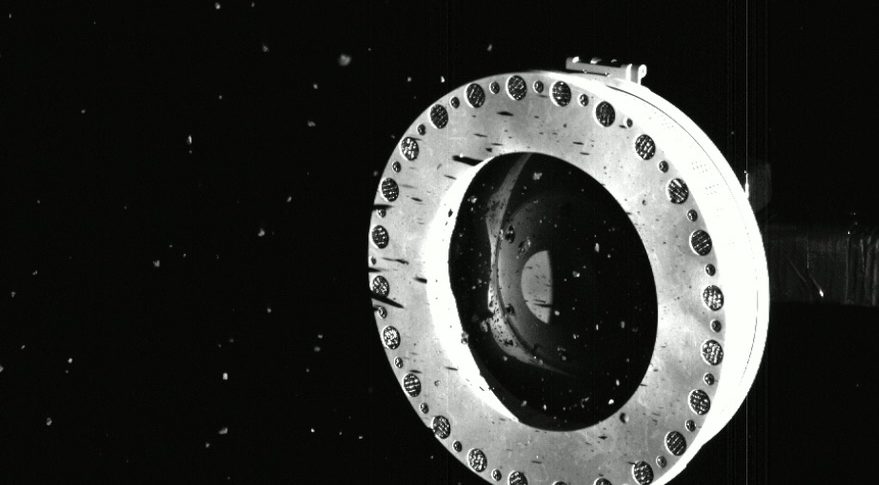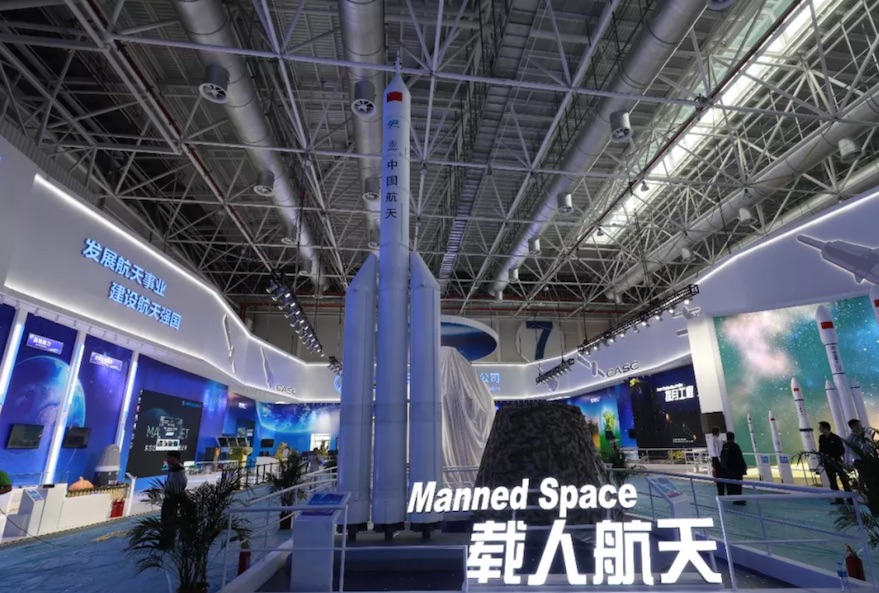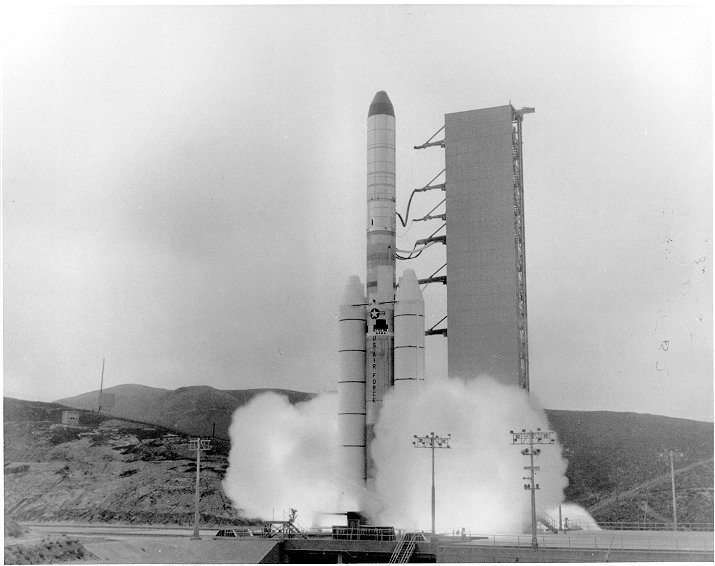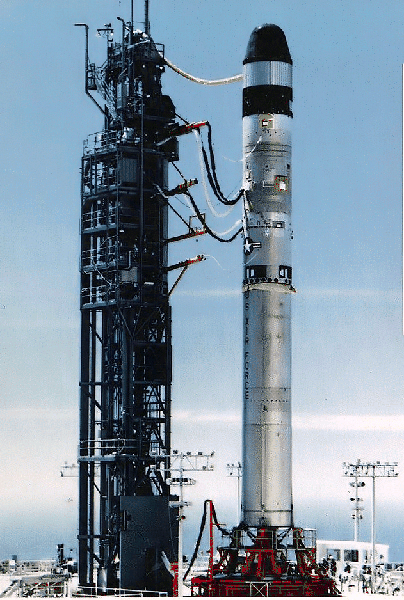NASA’s new Mars 2020 mission has New Mexico written all over it. The spacecraft carrying NASA’s latest Perseverance rover is scheduled to reach the Red Planet this February after launching from Cape Canaveral Air Force Station last July. Once the rover touches down on Mars’ surface, it will search for signs of ancient life, and collect rock and soil samples for possible return to Earth.
In addition, a tiny helicopter attached to the rover will provide the world’s first controlled test flight on another planet.
The rover, the chopper and the cruise-stage spacecraft now hurtling through space are loaded with New Mexico-made technology to help power things up, control operations and enable much of the scientific research Perseverance will conduct on Mars.
That includes advanced solar cells, plus radiation- and temperature- hardened electronics developed by the Air Force Research Laboratory at Kirtland Air Force Base in partnership with some local businesses. And it includes sophisticated laser, sensing and detection devices built by Los Alamos National Laboratory in collaboration with international partners to conduct the critical geologic and mineral analysis that could determine if life ever existed on Mars.
SuperCam
The spacecraft carrying the rover is now more than halfway to its destination. Mission scientists from LANL and other entities communicated with the vehicle in mid-October to make sure the technology onboard has adequately withstood the July launch and the harsh conditions it’s now enduring in space, said Roger Wiens, lead LANL scientist for the laser-based sensing and detection technology known as SuperCam.
A technician works on the mast unit where the SuperCam will be mounted on the Perseverance rover. COURTESY OF NASA/JPL
The SuperCam up close after installation on the Mars rover.
A mock-up of the Perseverance rover with the Ingenuity helicopter underneath.
“We don’t leave the instruments on during travel to Mars, but we can turn them on to check things out and make sure they survived the launch,” Wiens told the Journal. “We had that chance on Oct. 19 when we tuned in to send a number of commands to turn things on and off on the SuperCam and test some parts … . It’s doing great out there as far as we can tell.”
The real test, of course, will come when Perseverance lands on Mars and fires up its instruments, including the SuperCam. That technology is a next-generation system built on the foundation of the ChemCam, the previous laser-sensing instrument that LANL and partners created for NASA’s last rover, Curiosity, which is still conducting tests on Mars.
The ChemCam — which was built in and operated from both New Mexico and France — provided the laser-zapping capability needed to study the chemical composition of rocks that has helped to explain the nature of the large, ancient Mars lake where Curiosity landed, Wiens said. But the new SuperCam has far more capabilities that can take scientific understanding of Mars’ geology and mineralogy to the next level. The ChemCam uses a single, ultraviolet laser to basically pulverize bits of rock into dust to examine the chemical content. In contrast, the SuperCam can now also modify the laser beam to a green color to make organic materials and certain minerals in the rocks fluoresce, or glow.
That means the SuperCam can not only determine chemical composition, as the Curiosity does, but also identify mineral content to understand how the chemical elements in rocks are bound together. “We’ll basically be reading the book of geology on Mars to tell us more about its habitability and how things formed there,” Wiens said. The SuperCam sits on the rover’s mast. The laser can zap rocks up to 25 feet away, allowing Perseverance to study rock samples that can’t be reached with its robotic arm.
It also includes a microphone, which will provide the first scientific recordings from the Martian surface, including wind or any other sounds the environment might offer, Wiens said. The microphone’s primary purpose is, however, to determine how hard the rocks on Mars are by listening to sounds the laser makes as it zaps them.
“The laser is tightly focused and it creates a small pit in the rock with a little zapping sound, or shock wave, when it hits it,” Wiens said. “As the laser continues to strike the rock, it makes a different sound between shots and we can examine the differences to tell how hard the rock is. That’s useful, because, in the future, we’ll want to drill rocks, and this will tell us in advance how hard they are.”
While the SuperCam can detect organic compounds, another instrument mounted on the arm of the rover will specifically search for organic molecules that might contain signs of life using an ultraviolet laser for extremely fine imaging of just a few microns at a time, Wiens said. That instrument, dubbed SHERLOC — an acronym for Scanning Habitable Environments with Raman & Luminescence for Organics and Chemicals — includes electronics and detection capabilities built originally by LANL for the ChemCam. Living bodies are made up of organic molecules and Curiosity did previously detect their presence on Mars. But much closer examination is critical, because those molecules can also be made by nonliving processes, Wiens said.
“Curiosity found organic molecules, which is tantalizingly interesting, but it doesn’t mean there was life there,” Wiens said. “Perseverance’s goal is to follow up on those discoveries using more advanced instruments, and by preparing rock and soil samples that could be brought back to Earth.” Perseverance is equipped with a hollow drill and more than three dozen tubes to grab soil and rock cores that it will drop on the ground in documented places for later retrieval by a future Mars mission that NASA and the European Space Agency are now jointly planning. That future mission will involve three vehicles, including one to land on Mars to collect the samples, a rocket to shoot back into orbit and a third spacecraft to rendezvous with the orbiting vehicle to take the samples back to Earth, Wiens said.
Other local tech
Apart from LANL’s direct involvement in Perseverance exploration, technology developed by the AFRL in partnership with two Albuquerque businesses is also providing power for some of the spacecraft on the mission, plus foundational, space-hardened electronics needed to operate on Mars, said Paul Hausgen, senior engineer and deputy chief for the Spacecraft Component Technology Branch of AFRL’s Space Vehicles Directorate.
“AFRL is not directly involved in the actual mission, but it developed some of the technology that enables it,” Hausgen told the Journal. That includes the computer electronics used on the spacecraft carrying Perseverance to Mars, and on the rover itself. The AFRL spent more than $120 million over 25 years designing those electronics to withstand radiation and extreme temperatures in space. They’re now commercially available for use by NASA and other space enterprises.
In addition, a thermal design software system developed by AFRL in partnership with Albuquerque company LoadPath LLC was used by NASA’s Jet Propulsion Laboratory in California to test weather-resistant components for the Mars helicopter, dubbed “Ingenuity.” The “Veritrek” software allows engineers to rapidly evaluate thermal sensitivities, identify risk, and modify things to enable operations under intense heat and cold.
LoadPath developed the software under a $3 million AFRL contract that began in 2009. It saved the Jet Propulsion Laboratory about 14 weeks of design and analysis time when building the helicopter, and the mission team will continue to use it to monitor temperature and performance after Ingenuity actually lands on Mars. “It will help refine operations when the helicopter is actually flying,” Hausgen said.
Meanwhile, solar cells made by Albuquerque- based SolAero Technologies Corp. are now powering up the spacecraft carrying Perseverance to Mars. And a new, cutting-edge solar technology developed in partnership with AFRL will also power the Ingenuity helicopter when it flies.
SolAero is one of the world’s premier suppliers of solar cells for spacecraft. It builds multi-junction cells, whereby multiple layers of photovoltaics are stacked on top of one another to capture more sunlight and provide more power in space. And its panels are made with robust materials to withstand harsh environments.
“Our cells are now powering the cruise stage of the Mars mission — the vehicle that will deliver the rover to Mars and remain there in orbit,” said SolAero president and CEO Brad Clevenger. “They’re on the butt end of the spacecraft, facing backwards toward the sun as the vehicle flies toward Mars.”
For the helicopter, SolAero provided next-generation Inverted Metamorphic, or IMM, cells, which it developed over the past decade with $15 million from the AFRL. IMM is made with thin film about one-sixth the thickness of a human hair, making it super lightweight and flexible. That’s critical for the Ingenuity, which needs to shed as much weight as possible to fly in Mars’ super-thin atmosphere. The Ingenuity weighs only about four pounds and includes special carbon-fiber blades that spin about eight times as fast as a standard helicopter on Earth. “We tailored the solar cells to optimize their performance on Mars,” Clevenger said. “They’re about 90% lighter than the typical solar cell we make.”
Looking ahead
The Perseverance is loaded up with a lot more technology built by many other NASA partners in the U.S. and elsewhere. That includes an instrument to produce oxygen from Martian atmospheric carbon dioxide, which, if successful, could be used by future astronauts on Mars to burn rocket fuel for returning to Earth.
A ground-penetrating radar will also provide centimeter-scale resolution of Mars’ geologic underground structure. And another instrument contains a set of sensors to measure temperature, wind speed and direction, pressure, relative humidity, and dust size and shape.
The Perseverance is scheduled to touch down on Feb. 18 in the Jezero Crater, the site of an ancient lake and river delta that NASA says has high potential for having signs of past microbial life. The public will be able to visit NASA’s mission website to view raw and processed images from 19 cameras attached to the rover.




















